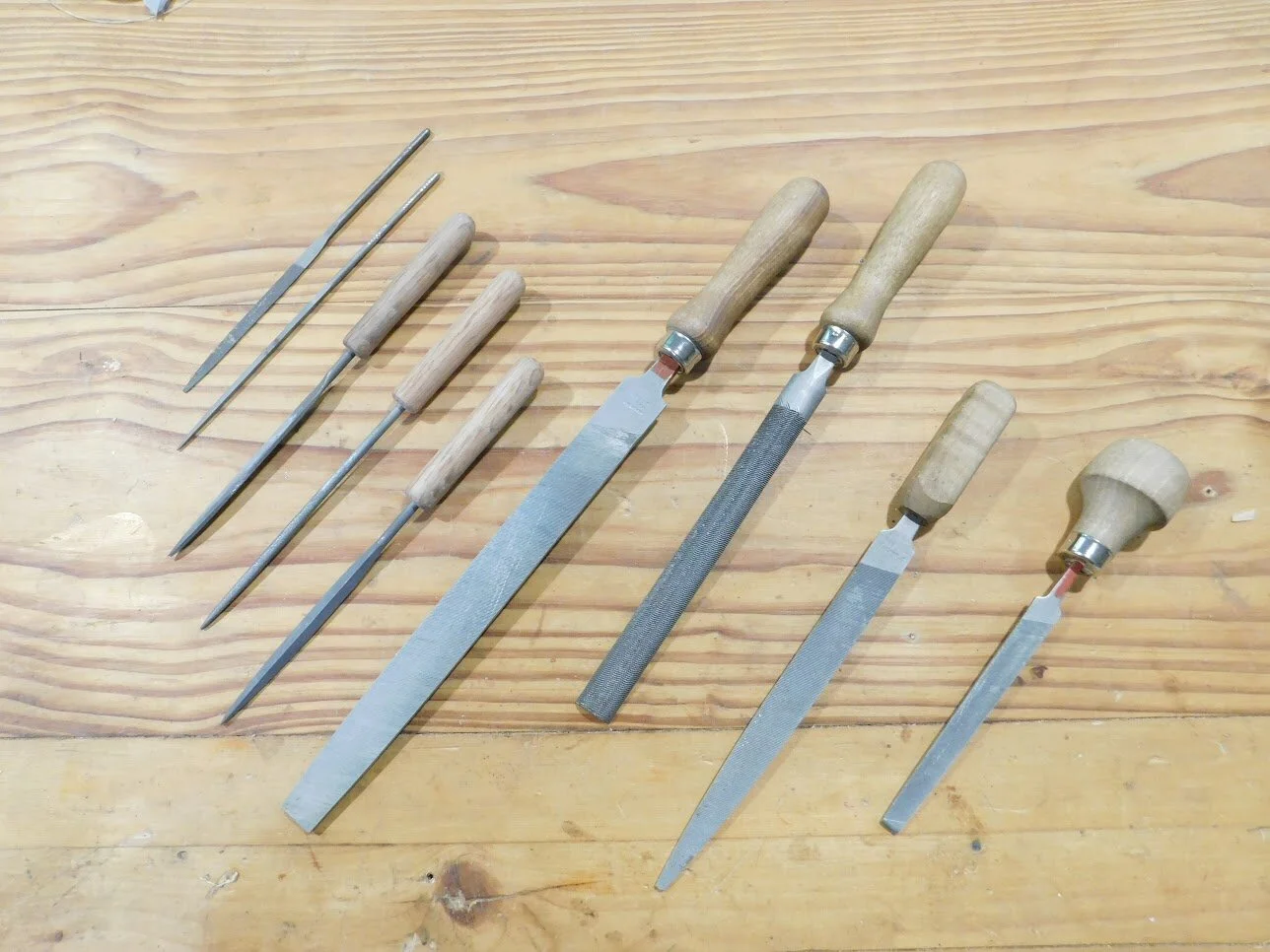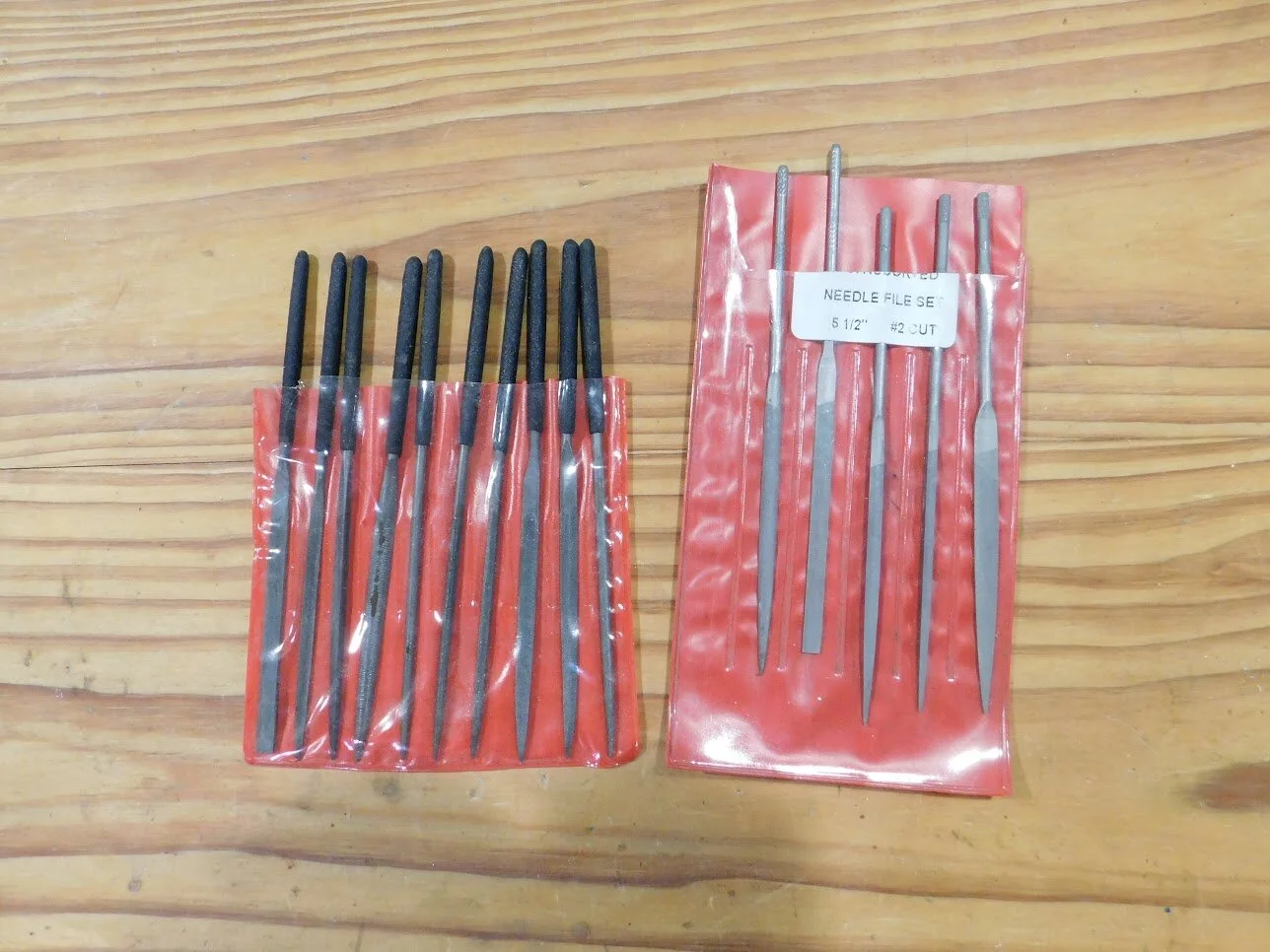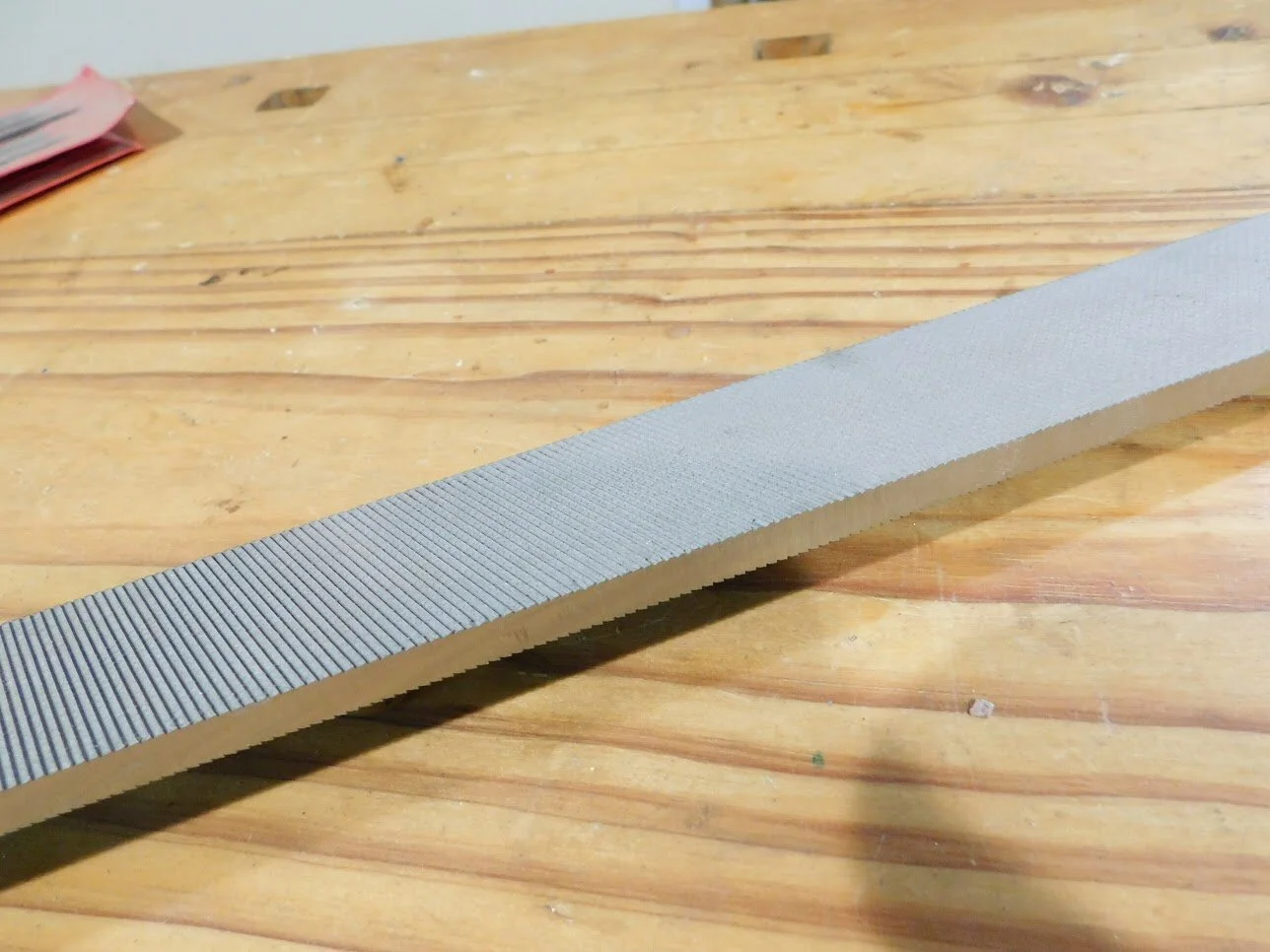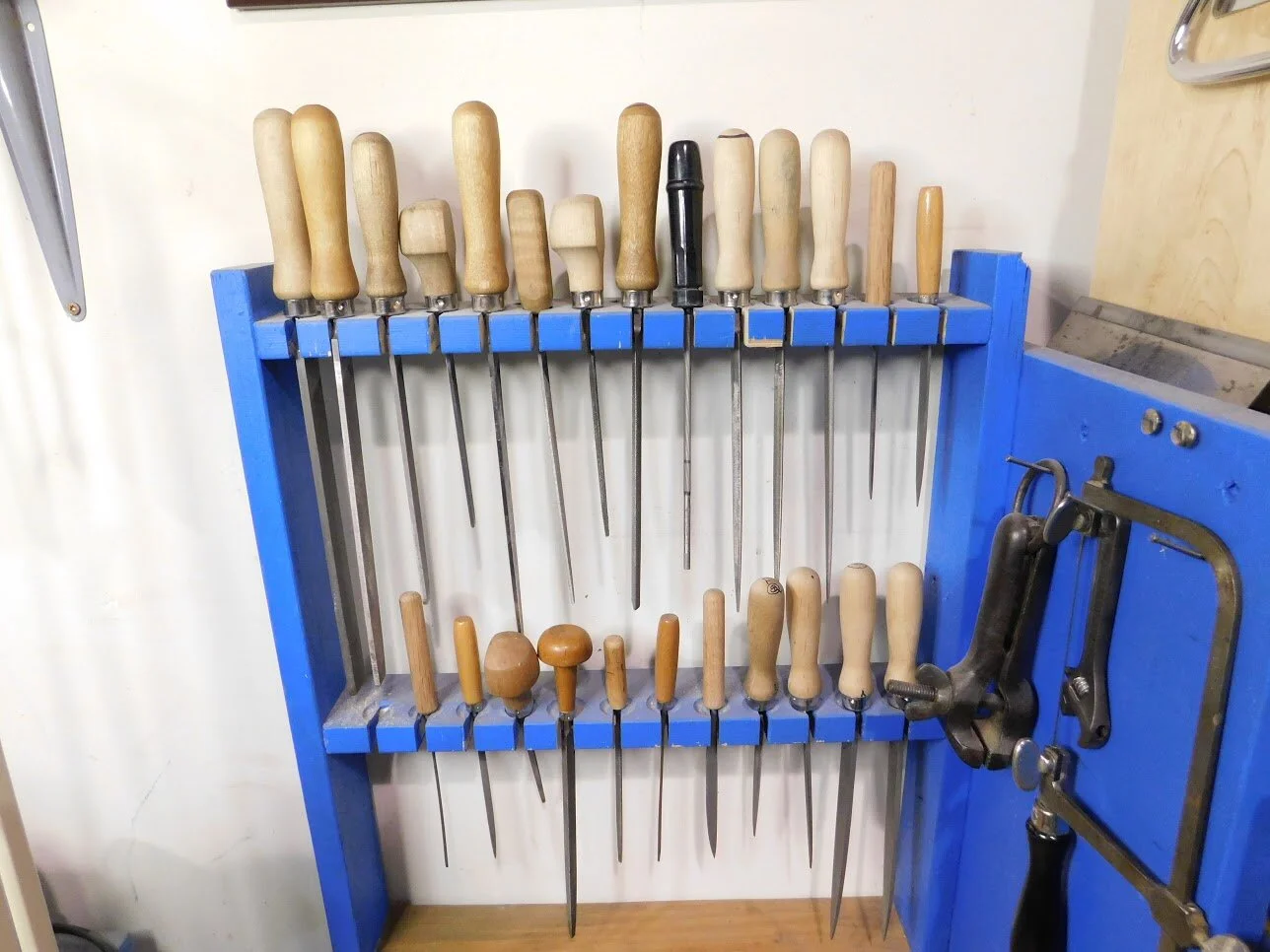Gun Making Tools of the 18th Century and Today.
By Ben Quearry
Of files and filing. The file is another ancient tool that dates back to biblical times. They have been made by hand for thousands of years. Leonardo da Vinci invented a machine to make files in the 16th century, not just a way to make them, but a machine to make them. Those who know me, know that the file is my favorite tool. In my opinion mankind’s two greatest inventions are the written word and the file. We are enjoying the written word right now. You can make virtually anything with the right file. A new file is a joy to work with, those new sharp teeth dig in and cut with just the slightest pressure. It is like the file wants to work for you.
When I was a young man, I apprenticed under a master tool and die maker. In the first two years I worked with him I seldom saw him use a milling machine, he did it all with a file. Being young and headstrong I would often complain, but his reply was always the same: before you can use the mill, you must master the file.
Files come in a wide variety of shapes and sizes. For the most part they are rectangular in cross section, but they can also be square, round, half round, triangular or three corner and any shape in between. A file differs from a rasp in that a file has teeth that are the complete width of the file, a rasp has several individual teeth across its width.
The coarseness of file teeth uses somewhat confusing terminology. The bastard file is the roughest, based on my aforementioned experience I think the name refers to what it’s like to use one all day. A first cut file is finer than a bastard. A second cut file is finer still, then there is smooth cut. Files can be single cut, one row of teeth across its surface or double cut having a second row of teeth crossed over the first to make it cut faster. Needle files have numbers. The higher the number, the finer the teeth on the file. Swiss and American pattern files use a numbering system similar to needle files.
If you in the market for some files I would get an 8” or 10” second cut, or smooth mill file. You will use it a lot. A 6” half round is good to have. Look at what you are working on, what shapes you want to generate in your work. Buy the files that will give you the contours you want. A set of needle files is always handy for gun work. I recommend getting a couple of big files too. These big ones are called “Armstrong milling machines” A large file, like a 14 incher, can really move some metal. When used to draw file a barrel a long file will show if you are filing true and level. A shorter file can be held at a slight angle and you won’t detect misalignment as easily as with a long file, causing the work surface become filed out of true or rounded.
Another thing a file of any size should have is a comfortable handle. Little needle files and small 6” files may not need a handle but a larger file needs something to spread the load of pushing it across your hand. That sharp little tang of a file can really hurt your palm. A handle is a must have when using a file on a lathe. I have seen store bought handles, carved wood, turned wood, even corn cobs for handles.
File Cards
You will also need a file card. This is a flat, wide wire brush that is used to clean bits of metal from the file teeth. Buy one where you get your files and use it regularly. It’s a lot easier to keep the metal chips cleaned out than to wait until they get built up and must be picked out.
The first thing I do with a new file is to safe one edge. A safe edge on a file has the teeth ground off so you can file an inside corner, cutting one side without cutting the other. This is done with a belt sander or a bench grinder. Remember to wear your safety glasses while doing the grinding. I grind mine so the “lay” of the surface, the marks left by grinding, run parallel to the length of the file. This way the safe edge is just a little bit smoother than if the finish went across its surface like a tooth. You can also grind the safe edge at an angle you want to cut. I have one that is ground to cut the full cock notch on a tumbler at just the right angle of engagement. I’ve heard of old master gunmakers building entire black powder cartridge rifles with only files, each one ground to a specific shape for the proper contour of the receiver, hammer, etc. A three-corner file with a safe edge is what I use to finish the slots in a barrel for sights and tenons. The safe edge allows me to cut the side of the groove without deepening the slot. I know, you can use a milling machine, but by the time I set the mill up I can rough in the slot with a hack saw and finish it with that three-corner file
It’s important to store files correctly so they don’t damage each other
For filing larger work grip the file with both hands, have the work about elbow height in a vise. Gently press the file down onto the work and push it forward, using your shoulder and elbow. You don’t have to push down too hard, let the file do the work. Keeping your elbow close to your body will make it easier to push the file straight. Lift the file slightly on the back stroke. You should always push a file, never pull it. Pulling a file across the work causes the teeth to load up and ultimately dulls the file. Filing can be work, don’t make it harder on yourself by dulling your tools. Use the full length of the file teeth, don’t wear out one little spot in the middle of the file. I was filing a stock on a rifle one time, carefully working with one little area of the file. Helmut Mohr, the master German gunmaker watched me for a moment then said “It is a file not a fiddle! Use the entire length of the file.” I never forgot that.
Rubbing chalk into the file teeth will prevent them from loading up and pinning, leaving a deep scratch in your smooth surface you worked so hard to achieve. I keep a large piece of sidewalk chalk on my bench and every few strokes rub some into the file I’m using.
Note the variety of File Handles seen here
Watch what you file. A hard piece of metal can ruin a file in just a few strokes. Don’t expect the file you used for testing that knife blade you just hardened to be good for anything else. When it skated across that hard surface it got dull fast. I’ve got one old file for testing blades and that’s pretty much all it does. Keep your files separated from each other. Sliding together in a drawer or banging against each other will dull them quick. A file rack can help to prolong their life.
Files can be purchased from industrial supply houses, online and at hardware stores. If you buy used files watch out for the rusty ones, often rust corrodes away the sharp points of the teeth. I prefer better quality files, Swiss and German made are the best. They are expensive, due to that fact most of my arsenal of files are the readily available Nicholson brand. Some say they are not the best quality, but they are affordable, and I am confident they are better than a casehardened iron file from the 18th century.
I’ll see you at the Hall
Benjaman Quearry
















